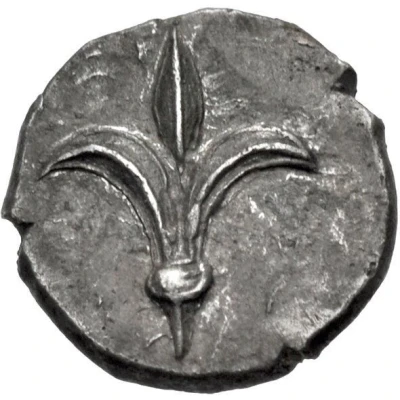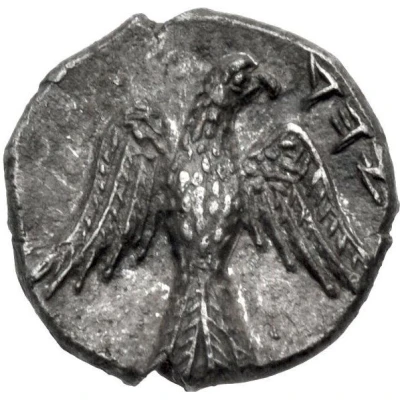½ Ma'ah-Obol - Hezekiah Judea 350 BC - 332 BC
| Silver | 0.2 g | - |
| Issuer | Satrapy of Yehud Medinata (Achaemenid Satrapies) |
|---|---|
| Type | Standard circulation coin |
| Years | 350 BC - 332 BC |
| Value | ½ Ma'ah-Obol = 1⁄48 Shekel |
| Currency | Shekel (539-332 BCE) |
| Composition | Silver |
| Weight | 0.2 g |
| Shape | Round (irregular) |
| Technique | Hammered |
| Demonetized | Yes |
| Updated | 2024-10-10 |
| Numista | N#92811 |
|---|---|
| Rarity index | 100% |
Reverse
Inscription beneath forpart of winged, horned lynx left
Lettering: יחזקיה
Translation: Hezekiah
Comment
This is probably the same Hezekiah mentioned by Josephus who, quoting Hecateus, tells us: "after the battle of Gaza, Ptolemy became master of Syria, and that many on the inhabitants, hearing of his kindness and humanity, desired to accompay him to Egypt and to associate themselves with his realm, 'Among these (he says) was Ezechias [Hezekiah], a chief priest of the Jews, a man of about 66 years of age, highly esteemed by his countrymen...'"
David Hendin Guide to Biblical Coins Fifth Edition
Interesting fact
One interesting fact about the ½ Ma'ah-Obol coin is that it was used as a form of currency during the reign of King Hezekiah in ancient Judah, which was a significant cultural and religious center in the ancient Near East. The coin's design and inscriptions reflect the cultural and religious influences of the time, and its use as a medium of exchange demonstrates the importance of trade and commerce in the region. Additionally, the fact that it was made of silver, a valuable and durable metal, highlights the importance of this coin as a symbol of wealth and prosperity in ancient Judah.

